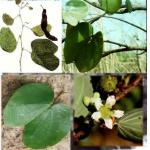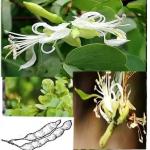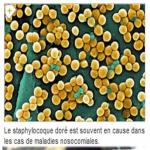Herbal Tea 401: Plants and Ovarian Cysts Natural Remedy Ovarian Cyst
Discover the Plants Against Ovarian Cysts and the best Natural Ovarian Cyst Remedy. To dry up ovarian cysts with simple medicinal plants.
Click here to join us
30,00€ excl. tax - 30,00€ inc. tax
- Supplier : Afrique-bio.
- Manufacturer : Afrique-bio
treat cysts with plants how to treat ovarian cysts without drugs? treat cysts without resorting to surgery
Kyste Ovarien Définition Causes Remède Naturel Kyste Ovarien
What is an Ovarian Cyst
An ovarian cyst is a fluid-filled sac (fluid), which forms inside the ovaries. This results from a dysfunction of the follicles. Indeed, when all goes well, the follicle formed on the ovary breaks and eliminates the oocyte, then resorbs. But, sometimes the follicle does not break and in this case a cyst appears. It usually occurs due to hormonal disorders and at any age.
Moreover, even 1 in 4 women is affected by ovarian cysts, at least once in her life. Fortunately, birth control pills reduce the risk of their development, but they also have their side effects. That's why we turn to nature and alternatives that can reduce abdominal pain and menstrual disorders. The biggest advantage of the following proposals is that not only can they treat cysts, but they can prevent their effects on the ovaries in the future.
How To Cure Ovarian Cyst Naturally?
Here is the best Ovarian Cyst natural remedy from the plant kingdom that dries up ovarian cysts. This natural remedy for ovarian cyst consists of the best herbal medicines to treat ovarian cysts. He will heal you and you will avoid the operation. The herbal tea is made up of several herbs that regulate hormone levels and the size of your cysts. It will help you relieve menstrual cycle pain and regularize your cycle. The herbal tea will also expel the waste products contained in your uterus. Generally, except when the diagnosis is too late, our natural treatment can cure ovarian cysts without side effects.
To find out the best natural remedy to cure ovarian cysts, click on the image below.
Phone/whatsapp: 00 229 94508396
Discovering cysts
Classification of cysts
There are many types of ovarian cysts referred to by doctors, scientists, and specialists. With the disease still under investigation, new information about the disease comes to light every year. Nevertheless, the most common types of ovarian cysts in the female half of our population can be identified.
The most common types are:
functional;
follicular;
paraovarian;
endometrioid;
isthmus;
dermoid.
Each of the types of cysts can be cured, but this requires its own individual approach, so in no case should you self-medicate. At the first signs of the disease, you should immediately go to the hospital, go to the doctor, undergo treatment, and the prices in the medical institution are quite high. In just one month, you can get rid of any type of cyst and continue to live a full life.
The causes
In fact, it is impossible to say for sure what the causes of the cyst are, since various scientific studies and discussions are still going on in the circles of doctors and specialists. It is impossible to say exactly what it is and what preventive measures will help prevent the development of a cyst. But if, in general, we rely on the opinion of professional doctors with experience and many years of experience, then we can draw general conclusions about the fight against the disease. Doctors focus on the fact that the imbalance between apoptosis and female sex hormones quite significantly affects the development of the cyst, and this is an important reason. If the patient has anamnesis and frequent inflammation of the genitals, endocrine diseases, this may also be the reason for the development of a cyst.
Factors that influence the appearance of ovarian cysts:
you can distinguish such a reason as smoking and alcohol. Their abuse can lead to the fact that in the future a woman will need treatment for a cyst;
high body weight or, conversely, very low weight can force a girl to fight this disease;
professional doctors in the clinic say that even a frequent or sharp change in weather can be the beginning of such a disease as an ovarian cyst; depression, constant stress, overwork can lead to the formation of a benign cyst;
early sexual activity becomes a factor causing further problems with female genitalia;
Constant and vigorous physical activity can contribute to the formation of a cyst.
It is important to note that, in principle, not a single young girl or an already established woman is immune from the fact that she can develop an ovarian cyst. In such cases, it remains only to urgently contact a professional doctor in the clinic. Timely diagnosis and an innovative method of treatment will help a woman of any age to cope with a disease, it is only important to listen to your own body and take care of it.
Symptoms, signs
The most common case in medical practice is an ovarian cyst without any primary symptoms. In this case, the ovarian cyst does not cause symptoms and slowly begins to dissolve, gradually poisoning the female body. In this case, it is in no way possible to rely solely on the signs that the body gives, since they may not exist at all. Irregular periods are one of the common symptoms of the disease, but they can indicate many other health problems in women. It is best to do an ultrasound once in a while, which can check for the presence of an ovarian cyst on the body. That is why all girls visit a gynecologist, do an ultrasound and undergo treatment during regular medical checks and examinations.
Nevertheless, there are some basic signs indicating the presence of an ovarian cyst in women, which everyone should definitely know. Women's health is a topic that should always be discussed, as both malignant ovarian cysts cannot be removed in rare severe cases. In this case, not only the woman's ovaries will suffer, but the whole body.
The main signs and symptoms of an ovarian cyst are:
if there is a feeling of heaviness in the lower abdomen or constantly annoying pain, it may be worth going to an appointment with a gynecologist to ensure that you are in good health and that the ovaries are in order;
if during sex a girl's pain in the lower abdomen increases, you should think of a cyst;
the development of ovarian cysts in women can be indicated by regular bleeding from the uterus without an understandable physiological reason;
if pain and pressure are felt during the trip to the toilet, it may be an ovarian cyst, the symptoms of which say everything;
after heavy physical exertion, the girl may begin to vomit or vomit, if this is the case, it is quite possible that the problem is in the ovary and the development of ovarian cysts;
an irregular menstrual cycle accurately indicates women's health problems. It can also be due to the symptoms of a cyst.
In addition to the above signs, an ovarian cyst can cause symptoms of a different nature. So, for example, if a woman notices that an incomprehensible seal has appeared on her abdominal cavity, and it makes itself felt when touching her fingers, it is worth going to the clinic immediately. If, in addition to pain and heaviness in the lower abdomen, a stable high temperature can cause a headache, then women may experience symptoms of an ovarian cyst fed by the ovaries.
Due to the fact that there are problems in the ovarian cyst, the symptoms are often also such as headache, fatigue, inattention, irritation, constant thirst, rapid weight loss. If the ovary suffers from the development of a cyst, the vessels can be compressed. This is all due to the fact that the cyst itself continues to grow and presses on the bladder causing the vessels to change location and also get compressed. The abdomen can become asymmetrical because most of these conditions affect a woman's appearance.
Leave us a comment as an answer or contact us via WhatsApp at +229 94508396
Natural Herbal Recipes For Ovarian Cyst
Apple cider vinegar
A common cause of cysts is potassium deficiency. Apple vinegar contains a lot of it, so it is a recommended natural remedy for this condition. Put a tablespoon of apple cider vinegar in a cup of water and drink a cup twice a day, until the cysts disappear.
Also read: How to cure ovarian cysts in Russia - without surgery
Ginger juice
Ginger is a powerful anti-inflammatory that reduces pain at the same time. It is useful for those who suffer from irregular menstruation as it induces and regulates the menstrual cycle. Put half a ginger root, a quarter celery root, half a glass of apple juice and half a glass of pineapple juice, or half a fresh pineapple, in a blender. You need to drink the resulting juice throughout the day.
Infusion of flax seeds
Flaxseed balances the level of estrogen and progesterone in the organs, which has the effect of shrinking cysts. In addition, the seeds are rich in fiber which helps eliminate toxic substances from the organs, but also cholesterol. Put a tablespoon of seeds in a cup of hot water. Wait 5 minutes, then drink water on an empty stomach. Follow the treatment until the size of the cysts decreases.
Read also: Natural solution to kill cysts and fibroids
Aloe vera
The natural remedy for classic problems, from head to toe: aloe vera gel prepared from fresh leaves improves insulin sensitivity and cures ovarian cysts in laboratory mice studied for this purpose, after treatment with aloe vera gel. Consume aloe vera juice daily: clean the leaves and mix the gel in any fruit juice, every morning. It is especially beneficial for those suffering from polycystic ovary syndrome.
Cinnamon
Cysts often form due to insulin resistance, which imbalances hormonal levels. Cinnamon is one of the most powerful remedies for ovarian cysts because it reduces the level of insulin released from the pancreas and controls blood sugar.
Omega-3 fatty acids
Yes, it seems that omega-3 fatty acids, the quintessential polyunsaturated fats, reduce insulin resistance and balance sex hormones. Consume nuts, almonds, flax seeds, fish. In addition, these acids also decrease stress levels, another factor that promotes the formation of cysts, especially in premenopausal women.
Add a comment









